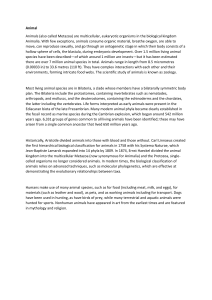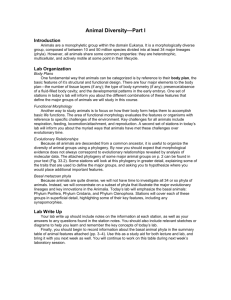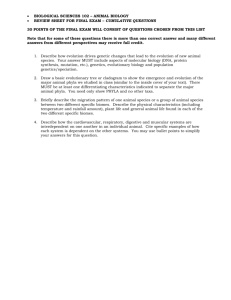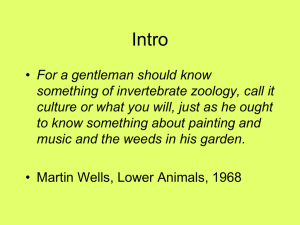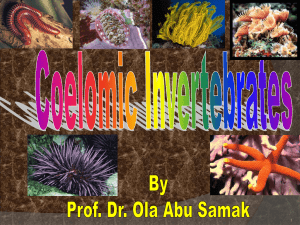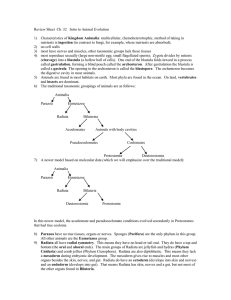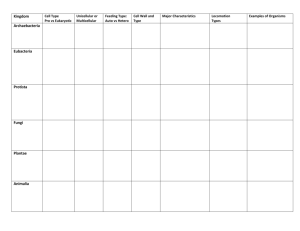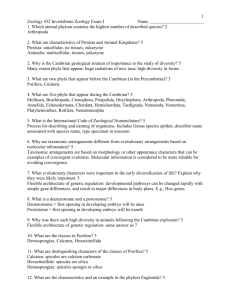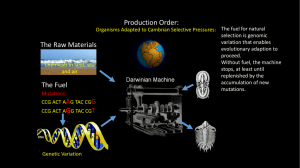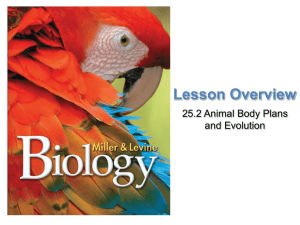File - Class Oracle Media
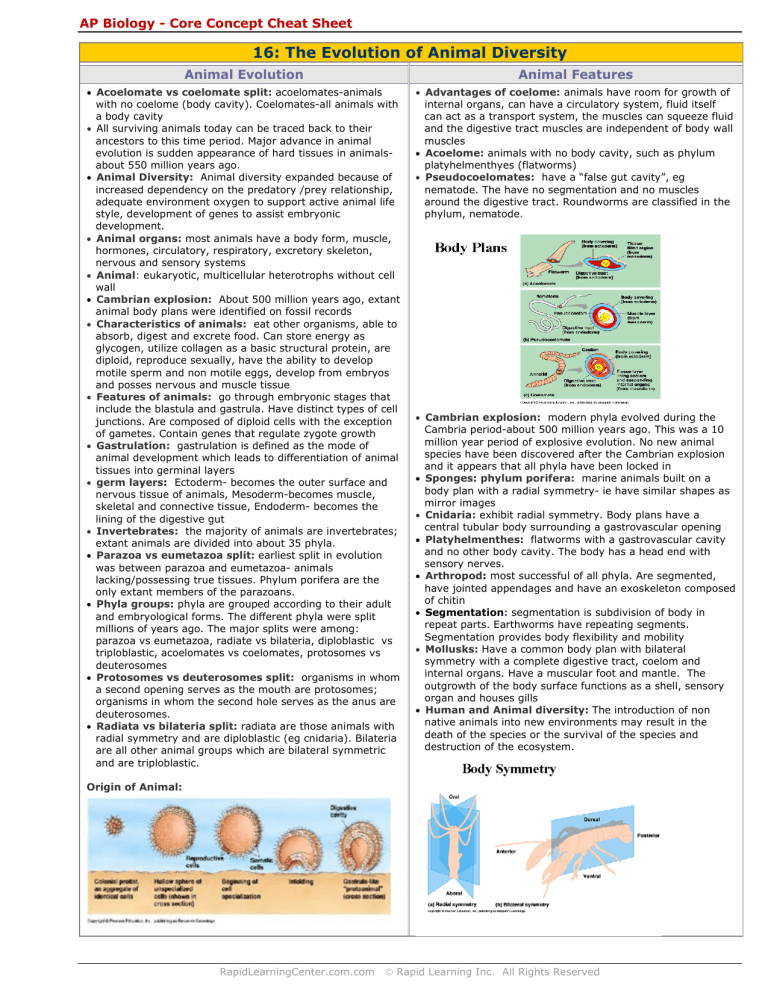
AP Biology - Core Concept Cheat Sheet
16: The Evolution of Animal Diversity
Animal Evolution Animal Features
• Acoelomate vs coelomate split: acoelomates-animals with no coelome (body cavity). Coelomates-all animals with a body cavity
• All surviving animals today can be traced back to their ancestors to this time period. Major advance in animal evolution is sudden appearance of hard tissues in animalsabout 550 million years ago .
• Animal Diversity: Animal diversity expanded because of increased dependency on the predatory /prey relationship, adequate environment oxygen to support active animal life style, development of genes to assist embryonic development.
• Animal organs: most animals have a body form, muscle, hormones, circulatory, respiratory, excretory skeleton, nervous and sensory systems
• Animal: eukaryotic, multicellular heterotrophs without cell wall
• Cambrian explosion: About 500 million years ago, extant animal body plans were identified on fossil records
• Characteristics of animals: eat other organisms, able to absorb, digest and excrete food. Can store energy as glycogen, utilize collagen as a basic structural protein, are diploid, reproduce sexually, have the ability to develop motile sperm and non motile eggs, develop from embryos and posses nervous and muscle tissue
• Features of animals: go through embryonic stages that include the blastula and gastrula. Have distinct types of cell junctions. Are composed of diploid cells with the exception of gametes. Contain genes that regulate zygote growth
• Gastrulation: gastrulation is defined as the mode of animal development which leads to differentiation of animal tissues into germinal layers
• germ layers : Ectoderm- becomes the outer surface and nervous tissue of animals, Mesoderm-becomes muscle, skeletal and connective tissue, Endoderm- becomes the lining of the digestive gut
• Invertebrates: the majority of animals are invertebrates; extant animals are divided into about 35 phyla .
• Parazoa vs eumetazoa split: earliest split in evolution was between parazoa and eumetazoa- animals lacking/possessing true tissues. Phylum porifera are the only extant members of the parazoans.
• Phyla groups: phyla are grouped according to their adult and embryological forms. The different phyla were split millions of years ago. The major splits were among: parazoa vs eumetazoa, radiate vs bilateria, diploblastic vs triploblastic, acoelomates vs coelomates, protosomes vs deuterosomes
• Protosomes vs deuterosomes split: organisms in whom a second opening serves as the mouth are protosomes; organisms in whom the second hole serves as the anus are deuterosomes.
• Radiata vs bilateria split: radiata are those animals with radial symmetry and are diploblastic (eg cnidaria). Bilateria are all other animal groups which are bilateral symmetric and are triploblastic.
Origin of Animal:
• Advantages of coelome: animals have room for growth of internal organs, can have a circulatory system, fluid itself can act as a transport system, the muscles can squeeze fluid and the digestive tract muscles are independent of body wall muscles
• Acoelome: animals with no body cavity, such as phylum platyhelmenthyes (flatworms)
• Pseudocoelomates: have a “false gut cavity”, eg nematode. The have no segmentation and no muscles around the digestive tract. Roundworms are classified in the phylum, nematode .
• Cambrian explosion: modern phyla evolved during the
Cambria period-about 500 million years ago. This was a 10 million year period of explosive evolution. No new animal species have been discovered after the Cambrian explosion and it appears that all phyla have been locked in
• Sponges: phylum porifera: marine animals built on a body plan with a radial symmetry- ie have similar shapes as mirror images
• Cnidaria: exhibit radial symmetry. Body plans have a central tubular body surrounding a gastrovascular opening
• Platyhelmenthes: flatworms with a gastrovascular cavity and no other body cavity. The body has a head end with sensory nerves.
• Arthropod : most successful of all phyla. Are segmented, have jointed appendages and have an exoskeleton composed of chitin
• Segmentation : segmentation is subdivision of body in repeat parts. Earthworms have repeating segments.
Segmentation provides body flexibility and mobility
• Mollusks: Have a common body plan with bilateral symmetry with a complete digestive tract, coelom and internal organs. Have a muscular foot and mantle. The outgrowth of the body surface functions as a shell, sensory organ and houses gills
• Human and Animal diversity: The introduction of non native animals into new environments may result in the death of the species or the survival of the species and destruction of the ecosystem.
RapidLearningCenter.com.com © Rapid Learning Inc. All Rights Reserved
